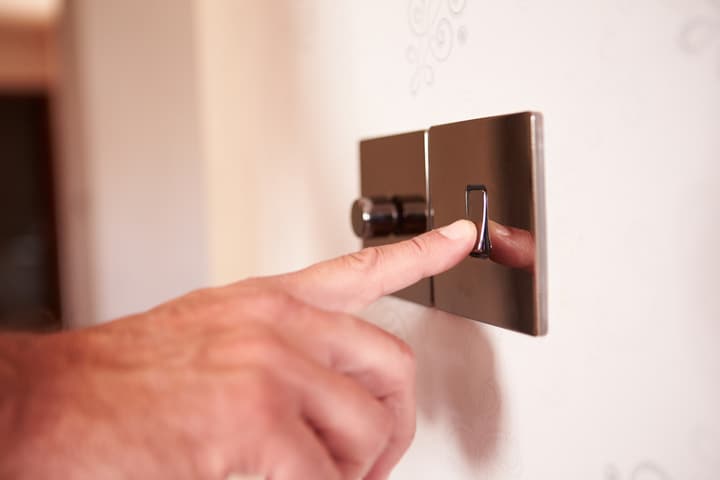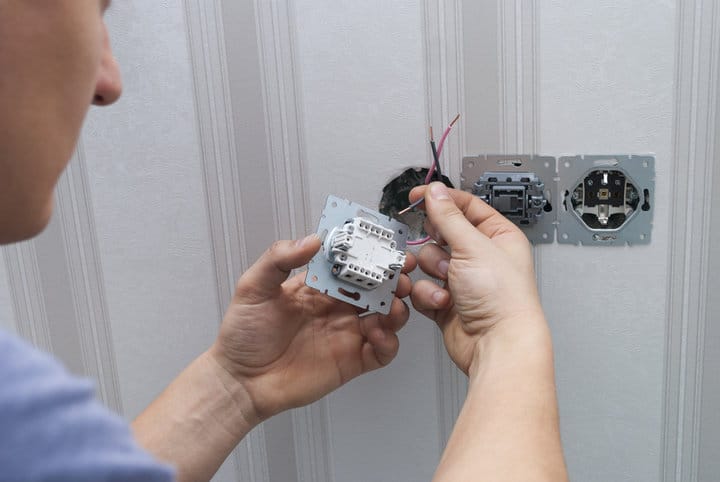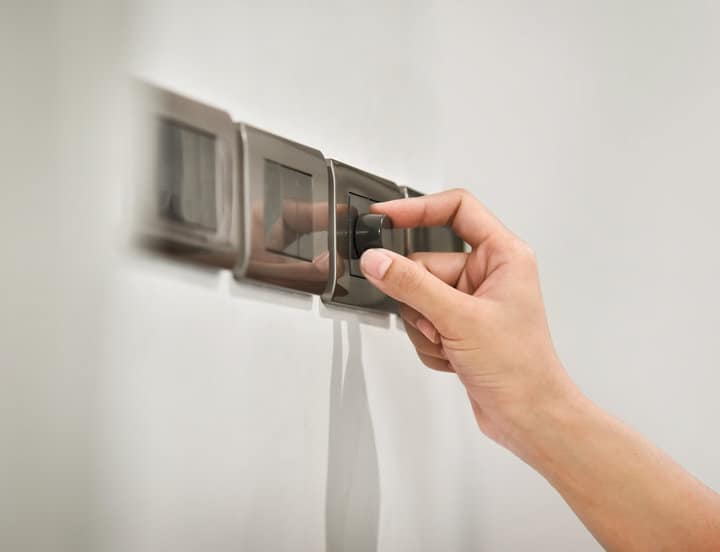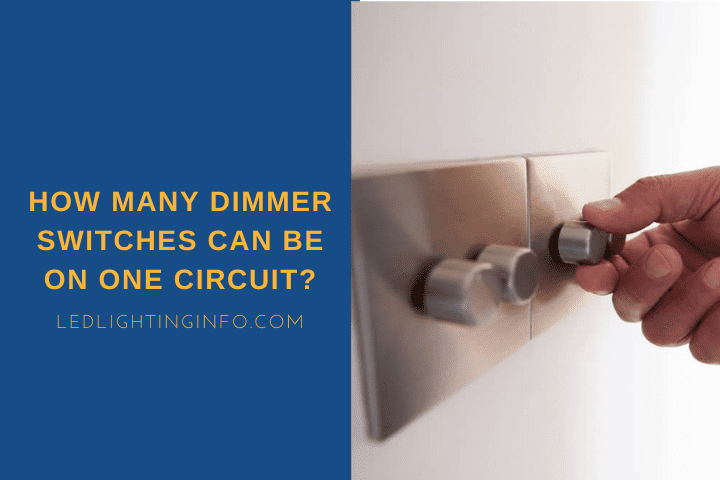There’s a little confusion when installing dimmer switches in your home.
And that confusion stems from whether you can have more than one dimmer switch on a lighting circuit.
The way that modern dimmers work is by very rapidly switching the current on and off. So if you have more than one dimmer on a circuit, can they interfere with each other?
When looking at a whole-home lighting circuit, you can have as many dimmers installed as you wish – except for where they would control the same lights. This is still possible, but you would need specialist master/companion dimmers.
Let’s take a look at this in more detail by examining:
- The maximum number of dimmers on a lighting circuit
- Whether you can have two dimmers on a 3-way circuit
- Companion dimmers and other solutions for dimming lights
Maximum Number Of Dimmer Switches Per Circuit

If you want to install dimmer switches in every room of your home, then the good news is that you can.
There’s no limit on the number of dimmer switches you can install on a home lighting circuit.
A dimmer switch regulates the current, switching it on and off to interrupt it.
This keeps the voltage unchanged but interrupts how frequently it passes through the bulb(s).
It’s invisible to us, but it means that the light is on for less time and so appears to human eyes to be dimmer.
And when it does this, it only impacts the circuit loop that the dimmer switch is on.
So to explain briefly – you will have a central lighting circuit that runs throughout your home and is linked to your lighting circuit breaker.
But each room will be on its own loop.
Otherwise, if that wasn’t the case, then you would control every light in your home every time you flipped a light switch.
Because each room has its own loop running off the main circuit, a dimmer will only impact that room.
And so you won’t get dimmer switches competing to interrupt the current on the same loop, which wouldn’t work.
That’s why you can install as many dimmers as you want in your home without an issue, provided they each control their own set of lights.
There’s no concern with overloading a lighting circuit with dimmer switches either.
The only problem will be overloading a circuit with too much lighting for that dimmer to control.
Each dimmer will have its own maximum wattage, and as long as the lights on the same loop as the dimmer don’t exceed that, you won’t have any issues.
If the lights exceed that dimmer’s max wattage, the dimmer won’t work properly, and you may flip the circuit breaker for the whole lighting circuit.
You should consider whether you need to replace your lights with lower-wattage alternatives or upgrade your dimmer.
Can You Have Two Dimmer Switches For A 3-Way Circuit?

A 3-way circuit is a loop of a lighting circuit where you will have two light switches controlling the same set of lights.
One of the most common uses for these circuits is for staircases, where you want a switch at the top and bottom of the staircase.
You can always turn the lights on to safely walk up or down the stairs.
But if you have a larger living room with separate entrances or a long hallway, you might also have this type of circuit.
There are 3-way dimmer switches that you can buy, but they are designed to be used alongside a regular light switch, not a second dimmer.
You wire the 3-way dimmer to the secondary 3-way switch, and this lets you dim the lights from the main dimmer or switch the lights on and off from the secondary switch.
But if you buy two regular 3-way dimmer switches and wire them together, then you’re going to have two dimmers trying to interrupt the alternating current.
They’ll clash, meaning that as one turns the current on, the other could turn it off.
So by default, you can’t have two regular 3-way dimmer switches wired into the same circuit loop.
Although there is a way around that – more on that below.
You can, of course, have two 3-way dimmer switches wired into your home lighting circuit if they’re in different rooms and not controlling the same lights.
The problems only occur if the 3-way dimmers compete on the same circuit loop.
Companion Dimmers And Other Solutions

If you have a 3-way circuit in your home that you want to be controlled by two separate dimmers, you have two main options available.
The first is to buy a specialist dimmer set with a master dimmer and companion dimmers.
These are special dimmers that are designed to work together.
You must have a master dimmer installed, and then companion dimmers communicate with the master dimmer so that you can dim the lights from multiple locations.
How many companion dimmers work on one circuit loop will depend on the manufacturer, with the popular Lutron brand (Amazon) allowing up to 9 dimmers on one loop working together.
The other alternative is to replace your lights with smart lights (Amazon) or smart switches.
Smart light bulbs can be dimmed from your phone, or you can install smart dimmer switches to control lights.
Both companion dimmers and smart lights work in similar ways. However, these aren’t communicating mechanically but sending wireless signals to each other to dim the lights.
Companion dimmers communicate with the master dimmer, while smart lights communicate directly with the phone application and each other via hub.
Smart bulbs are the more expensive option but open up more customization options and ways you can control them, including being able to add wireless motion sensors or set up timers and routines.
Final Words
The easiest way to think of everything is to separate how you think about the lighting circuit in your home.
Essentially, you’ve got independent circuits for each room linked together instead of one lighting circuit.
So you can have as many regular dimmers in your home as you want, but one per room or set of lights – unless you buy specialist companion dimmers or smart dimmers with smart bulbs.
Simple enough when you think of it like that, right?
Have you installed dimmers throughout your home, or just kept it to one or two rooms, maybe?

